Beef Liver for Cats: Nutrient Powerhouse or Risky Treat? (Vet-Reviewed Safety Guide)
- 15 Apr 2025 10:58
As dedicated cat parents, we're always looking for ways to enrich our pets' diets and offer them tasty, nutritious treats. Given that cats are obligate carnivores, meat-based options often come to mind. Organ meats, in particular, are known nutrient powerhouses, leading many to ask: can cats eat beef liver? Is this readily available organ meat a feline superfood, or does it hide potential dangers?
The answer is complex: Yes, cats can eat beef liver, and it offers substantial nutritional benefits, but **only in strict moderation**. Beef liver is incredibly rich in certain nutrients, particularly Vitamin A, and overfeeding it can lead to a serious and debilitating health condition. Understanding the critical balance between the benefits and the significant risks is paramount for responsible feeding. This comprehensive guide, adhering to E-E-A-T standards (Experience, Expertise, Authoritativeness, Trustworthiness) and reviewed for veterinary accuracy, will delve into the nutritional value of beef liver, its potential benefits, the severe dangers of overconsumption (especially Vitamin A toxicity), safe preparation methods, and appropriate portion sizes, ensuring you can make informed decisions about offering **beef liver for cats**.

Beef Liver's Nutritional Profile: A Potent Package
Beef liver is renowned in human nutrition for being exceptionally nutrient-dense, and many of these nutrients are also vital for cats:
High-Quality Protein: Like all meat, beef liver provides excellent animal-based protein with a complete amino acid profile, crucial for maintaining muscle mass, enzyme function, and overall health in obligate carnivores.
Vitamin A (Retinol):** EXTREMELY HIGH concentration. Cats require pre-formed Vitamin A (which they cannot efficiently make from beta-carotene in plants), essential for vision, immune function, skin health, reproduction, and growth. However, its high concentration is the **primary source of risk** associated with feeding liver.
B Vitamins:** Beef liver is loaded with B vitamins vital for feline health:
Vitamin B12 (Cobalamin):** Essential for neurological function, red blood cell formation, and metabolism. Liver is one of the richest sources.
Riboflavin (B2): Crucial for energy metabolism and cellular processes.
Niacin (B3):** Important for energy production, skin health, and nerve function.
Folate (B9):** Necessary for DNA synthesis and cell growth.
Pantothenic Acid (B5) & Vitamin B6:** Involved in numerous metabolic pathways.
Iron (Heme Iron):** Provides highly bioavailable heme iron, essential for forming hemoglobin (which carries oxygen in red blood cells) and preventing anemia.
Copper:** Necessary for iron absorption, forming connective tissue, and nervous system function. Liver is very rich in copper.
Zinc:** Supports immune function, wound healing, skin health, and enzyme systems.
Selenium & Phosphorus:** Important antioxidant and bone health minerals, respectively.
Taurine:** Contains some taurine, an essential amino acid critical for feline vision, heart function, and reproduction, although muscle meat (especially heart) often contains higher levels.
This impressive nutritional lineup explains why liver is often included in balanced commercial cat foods and why it might seem like an ideal supplement. However, the concentration of certain nutrients necessitates extreme caution.
Potential Benefits of Feeding Beef Liver (When Done Correctly & Sparingly)
Offered in strictly controlled, tiny amounts, plain cooked beef liver can provide:
Nutrient Boost
A small piece can deliver a significant dose of B vitamins (especially B12) and highly available iron, potentially benefiting cats with certain deficiencies (under veterinary guidance) or those needing extra support for energy metabolism or blood health.
High Palatability
The strong smell and rich taste of liver are often irresistible to cats. Tiny pieces can serve as a high-value training treat or help stimulate the appetite of a picky eater (consult your vet if appetite loss is due to illness).
Natural Source of Key Nutrients
It provides pre-formed Vitamin A, heme iron, and copper in their natural forms, complementing a balanced diet when used judiciously.
Remember, these benefits are only achievable with **strict moderation**. Overfeeding negates any potential advantages and introduces serious health risks.
THE CRITICAL DANGER: Vitamin A Toxicity (Hypervitaminosis A)
This cannot be overstated: the single greatest danger of feeding beef liver (or any liver) to cats is **Vitamin A toxicity**, also known as **Hypervitaminosis A**. Liver is one of the most concentrated dietary sources of pre-formed Vitamin A (retinol).
Fat-Soluble Vitamin:** Vitamin A is fat-soluble, meaning unlike water-soluble vitamins (like B vitamins), excess amounts are not easily flushed out of the body. Instead, they accumulate, primarily in the cat's own liver.
Chronic Accumulation:** Hypervitaminosis A typically develops over weeks, months, or even years of consuming too much Vitamin A, often from regular or excessive feeding of liver. It's rarely caused by a single large serving but rather by chronic over-supplementation.
Severe Consequences:** This condition is serious, painful, and often leads to irreversible damage.
Symptoms of Vitamin A Toxicity in Cats:
The clinical signs are often insidious initially but become debilitating:
Skeletal Deformities:** This is the classic sign. Excess Vitamin A disrupts normal bone growth and remodeling, leading to:
**Bony Spurs (Exostoses):** Abnormal bone formation occurs, most commonly along the cervical (neck) vertebrae, but also on elbows, spine, and other joints.
**Fusion of Joints (Ankylosis):** Vertebrae, especially in the neck, can fuse together, causing extreme stiffness and immobility.
Pain & Stiffness:** Cats become reluctant to move, groom themselves, jump, or even lower their head to eat/drink due to severe neck and joint pain. They may cry out when handled.
Lethargy:** Decreased energy and activity levels.
Weight Loss & Muscle Atrophy:** Due to pain, difficulty eating, and reduced mobility.
Poor Coat Condition:** Difficulty grooming leads to an unkempt appearance.
Constipation:** May occur due to pain or altered mobility.
Lameness or Abnormal Gait:** Difficulty walking normally.
Diagnosis relies on history (dietary intake of liver/Vitamin A), clinical signs, and characteristic changes seen on X-rays (bony growths, fused vertebrae). While stopping the high Vitamin A intake halts progression, the skeletal damage already done is usually permanent. Management focuses on pain relief and supportive care.
The severe risk of this condition is the primary reason why feeding liver to cats requires extreme caution and strict portion control.
Other Potential Risks of Beef Liver for Cats
Beyond Vitamin A toxicity, other concerns include:
1. Raw Beef Liver Dangers (Bacteria & Parasites)
Feeding **raw beef liver to cats** carries significant risks, similar to feeding raw hamburger:
Bacterial Contamination:** Raw liver can harbor harmful bacteria like *Salmonella*, *E. coli* O157:H7, *Listeria*, and *Campylobacter*. These can cause severe gastroenteritis, sepsis, and pose a zoonotic risk (transmission to humans).
Parasites:** *Toxoplasma gondii* cysts can be present in raw beef tissues, including liver. Ingestion can lead to Toxoplasmosis in cats and poses risks to humans (especially pregnant women). Other parasites are less common in inspected beef but remain a possibility.
**Thorough cooking kills most of these pathogens.** Raw feeding requires meticulous sourcing, handling, and awareness of risks, ideally with veterinary consultation.
2. High Fat Content (If Not Trimmed)
While generally leaner than fatty muscle cuts, liver still contains fat. If significant amounts of surrounding fat are included:
GI Upset:** Can cause vomiting or diarrhea.
Pancreatitis Risk:** High-fat intake can potentially trigger pancreatitis in susceptible cats.
3. Copper Accumulation (Less Common but Possible)
Liver is very rich in copper. While essential, excessive chronic intake *could* theoretically contribute to copper storage issues in the cat's liver over the very long term, although this is less documented as a major clinical problem in cats compared to dogs fed high-copper diets.
4. Dietary Imbalance
Beef liver is high in Vitamin A, iron, and copper but low in calcium. Feeding too much liver relative to the rest of the diet disrupts the crucial calcium-to-phosphorus ratio and displaces calories from balanced food sources, potentially leading to deficiencies in other areas.
Safe Preparation: Cooking is Recommended
Given the risks of raw liver, cooking is the safest approach for most cat owners:
Source Quality Liver:** Purchase fresh or frozen beef liver intended for human consumption from a reputable source.
Trim Fat/Membranes:** Remove any excessive visible fat or tough membranes.
Cut into Small Pieces:** Makes cooking faster and portions easier.
Cook Thoroughly:** Boil, steam, or pan-fry (without oil/butter) the liver pieces until fully cooked through (no longer pink inside). Cooking kills bacteria and parasites.
**PLAIN Only:** Absolutely critical – do NOT add salt, oil, butter, garlic, onions, spices, or any other seasonings. Garlic and onions are toxic to cats.
Cool Completely:** Let the cooked liver cool to room temperature.
Chop Finely/Mince:** Cut the cooked liver into tiny, easily manageable pieces (pea-sized or smaller).
This method ensures the liver is pathogen-free and safe to offer in tiny amounts.
CRUCIAL: Portion Control and Frequency
This is non-negotiable to prevent Vitamin A toxicity and dietary imbalance.
Treat ONLY:** Beef liver should only ever be given as a very small treat or supplement, never a meal.
Tiny Amounts:** Think **pea-sized** pieces. A total weekly amount should generally not exceed **~1/4 to 1/2 ounce (roughly 7-14 grams)** for an average adult cat, divided over the week.
Frequency Limit:** Offer a tiny piece just **once or twice a week MAXIMUM**. Daily feeding, even in small amounts, risks chronic Vitamin A accumulation.
Consider Overall Diet:** If your cat's main food already contains significant liver, reduce treat amounts accordingly.
Vet Consultation:** Your veterinarian can provide the safest recommendation based on your cat's size, age, health, and overall diet.
When asking "how much beef liver can cats eat?", the answer is always: very little, very infrequently.
Beef Liver in Commercial Cat Foods vs. Treats
Many balanced commercial cat foods list beef liver (or other liver) as an ingredient. This is generally safe because:
Formulated Amounts:** Reputable manufacturers calculate the total Vitamin A content from all ingredients (including liver) to ensure the final product meets AAFCO nutritional guidelines without exceeding safe upper limits.
Balanced Nutrition:** The liver is included as part of a recipe balanced with calcium and other nutrients.
The danger arises when owners *add extra liver* as treats on top of an already complete diet, potentially pushing the total Vitamin A intake into the toxic range over time.
Summary Table: Feeding Beef Liver to Cats
| Aspect | Safety Information & Recommendations |
| Can Cats Eat Beef Liver? | Yes, BUT only plain, cooked, and in **strict moderation** due to high Vitamin A. |
| Benefits (in moderation) | High protein, rich in Vit A (needed, but risky), B Vitamins (esp. B12), Iron, Copper. Highly palatable. |
| Primary Risk | **Vitamin A Toxicity (Hypervitaminosis A)** from chronic overfeeding. Causes irreversible bone damage. |
| Other Risks | Raw Liver (Bacteria/Parasites), High Fat (GI upset/Pancreatitis), Dietary Imbalance, Copper Accumulation (minor). |
| Raw Beef Liver | **Not Recommended.** High risk of *Salmonella*, *E. coli*, *Toxoplasma*. Zoonotic risk. |
| Cooked Beef Liver | **Safest preparation.** Kills pathogens. Must be plain, no additives. |
| Safe Preparation | Cook thoroughly (boil/bake), PLAIN, trim fat, cool, chop tiny (pea-sized). |
| Safe Portion Size | **Tiny amounts.** Treat only. Max ~1/4-1/2 oz (~7-14g) *total per week*. |
| Frequency | **Maximum once or twice per week.** Never daily. |
| Recommendation | Use plain cooked beef liver only as a very small, infrequent treat. Prioritize balanced diet. **Consult vet** about appropriate amounts. |
Navigating Pet Nutrition Questions? PettureX Offers Insight!
Understanding the critical balance needed when feeding nutrient-dense foods like beef liver is key to preventing serious health issues like Vitamin A toxicity. If you have questions about safe treat amounts, potential risks, or notice concerning symptoms in your cat, getting reliable information quickly is valuable while you consult your veterinarian.
The PettureX App provides helpful features for modern pet parents:
24/7 AI Vet Consultation: Get immediate AI-powered answers to questions like "How much liver is too much for a cat?" or guidance on symptoms like stiffness or lethargy, helping you assess the situation anytime.
Image Recognition Technology: Useful for breed identification or assessing visible health concerns.
AI-Powered Symptom Checker: Input your cat's symptoms for an AI analysis of potential causes, including nutritional toxicities or imbalances, aiding communication with your vet.
Comprehensive Pet Health Database: Quickly access information on feline nutrition, toxic foods, common illnesses, and preventive care.
PettureX serves as a convenient digital assistant, offering AI-driven support and information to complement the essential, personalized advice and care provided by your veterinarian.
Conclusion: Beef Liver - A Treat Requiring Respect and Extreme Moderation
In conclusion, while the answer to "can cats eat beef liver?" is yes, it comes with significant and serious caveats. Plain, cooked beef liver is a potent source of beneficial nutrients like protein, B vitamins, and iron, and is highly palatable to most cats. However, its extremely high Vitamin A content makes it dangerous if fed improperly.
Chronic overfeeding leads to the crippling condition of Hypervitaminosis A, causing irreversible skeletal damage. Raw beef liver also poses unacceptable risks of bacterial and parasitic infections. Therefore, beef liver should **only** be offered as a **tiny, infrequent treat**, prepared plainly (cooked thoroughly, no seasonings), and given in amounts carefully limited to **once or twice a week at most**.
Always prioritize a complete and balanced commercial cat food for your cat's daily needs. If you choose to offer beef liver, understand the risks, adhere strictly to portion control, and consult your veterinarian to ensure it's appropriate for your individual cat's health status and overall diet. Respecting the potency of this organ meat is key to keeping your feline friend safe and healthy.
Related

Frankly Dangerous: Can Cats Eat Hot Dogs? Vet Explains the Serious Risks
- 16 Apr 2025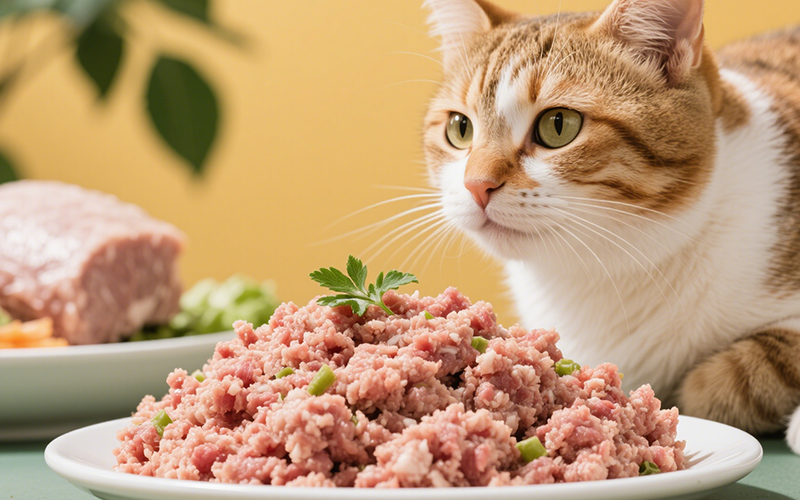
A Purrfect Protein? Can Cats Eat Ground Turkey Safely? (Vet-Reviewed Guide)
- 16 Apr 2025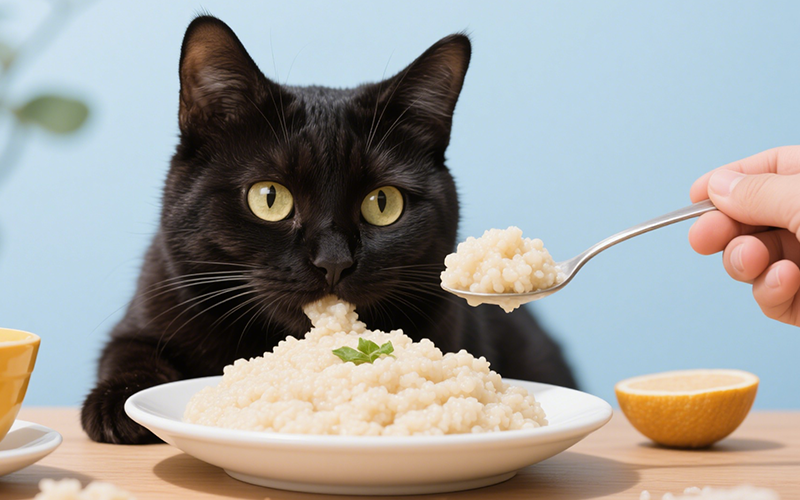
Gritty Situation: Can Cats Eat Grits Safely? Vet Explains the Risks
- 16 Apr 2025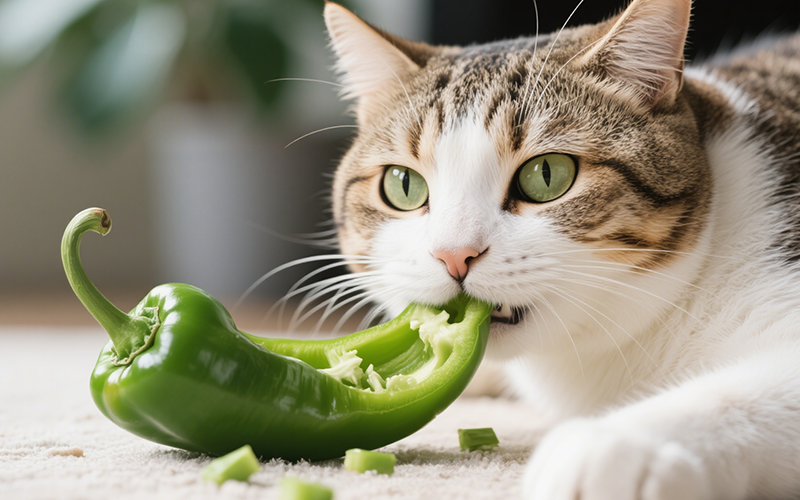
Crunchy Query: Can Cats Eat Green Peppers? A Vet-Reviewed Safety Analysis
- 16 Apr 2025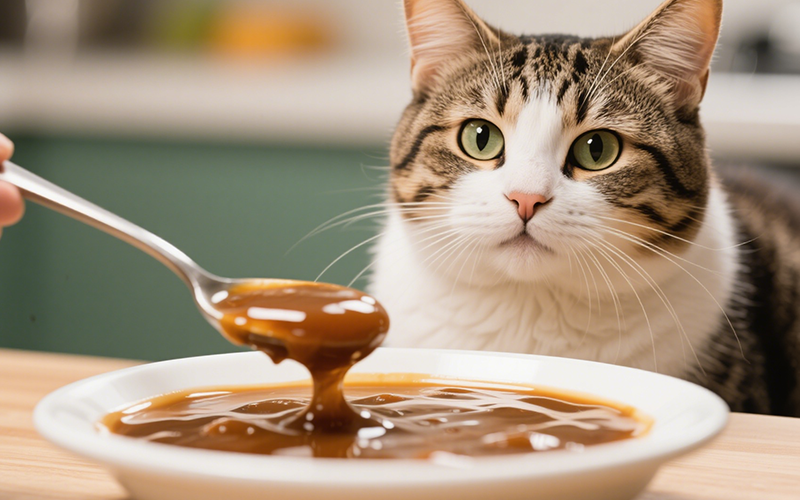
Gravy Danger Zone: Can Cats Eat Gravy Safely? (Vet-Reviewed Warning)
- 16 Apr 2025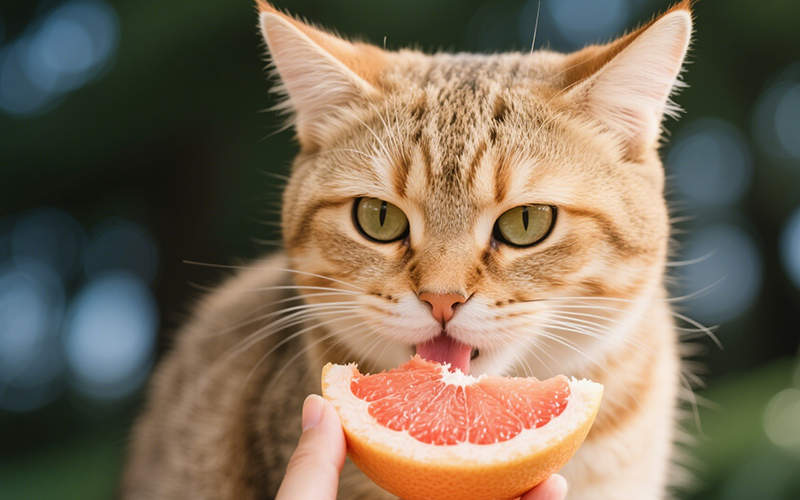
Toxic Temptation: Can Cats Eat Grapefruit? Vet Explains the Dangers
- 16 Apr 2025
Emergency Meal or Major Mistake? Can Cats Eat Dog Food For A Couple Days? (Vet Guide)
- 16 Apr 2025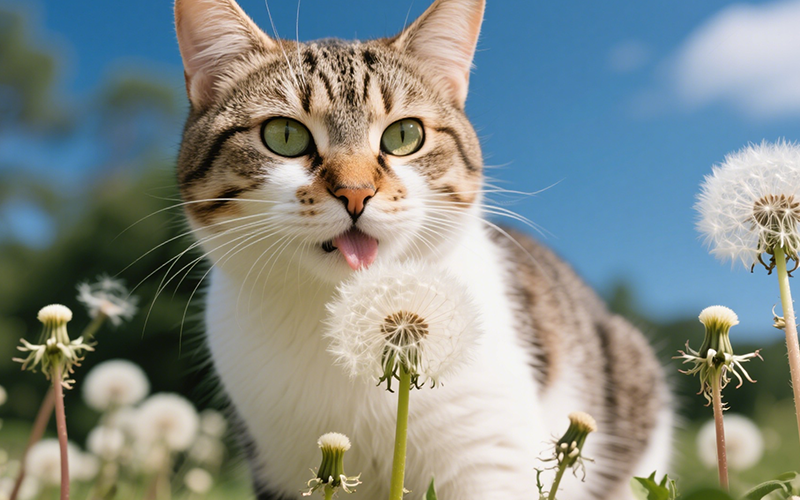
Dandelions & Felines: Can Cats Eat These Common Weeds Safely? Vet Explains
- 16 Apr 2025
Flaky Danger: Can Cats Eat Croissants Safely? Vet Explains the Buttery Risks
- 16 Apr 2025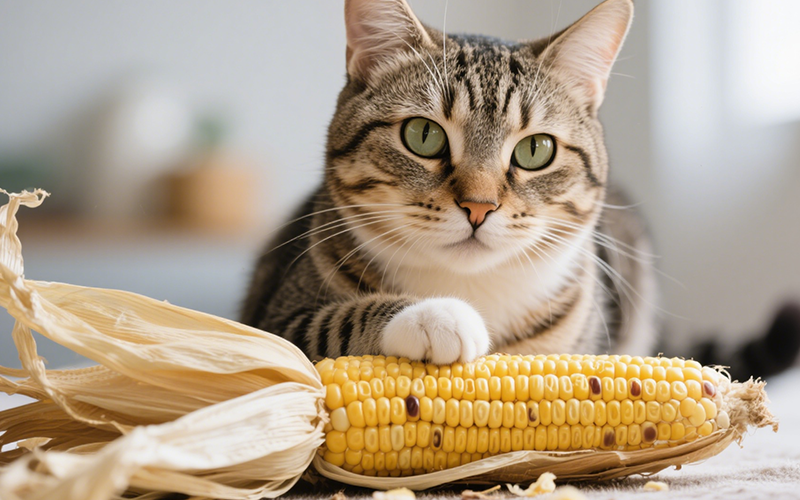
Hazard Alert: Can Cats Eat Corn Husks? Vet Explains Dangers of This Fibrous Material
- 16 Apr 2025
